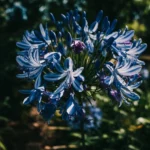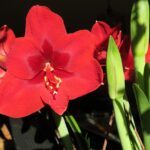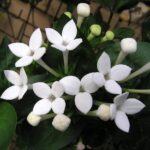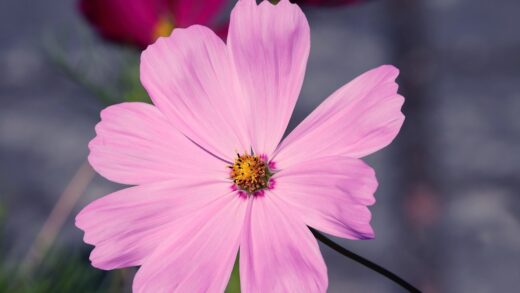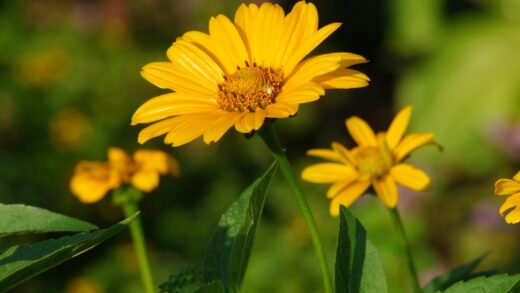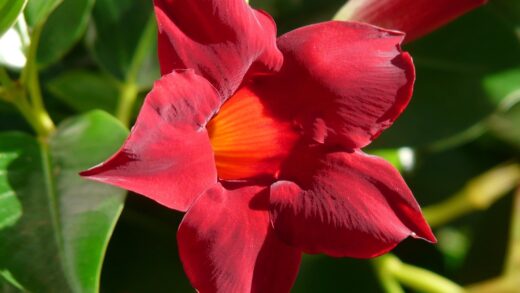Understanding the nuanced light requirements of Hosta ventricosa is fundamental to cultivating a plant that not only survives but truly thrives, displaying the deep, saturated color and robust form for which it is known. As a quintessential shade-loving plant, its relationship with sunlight is one of careful balance. While it is celebrated for its ability to flourish in low-light conditions where many other plants would falter, the quality and duration of the light it receives directly impact its growth, foliage color, and flowering potential. Achieving the perfect siting, one that provides bright, indirect light while shielding the plant from the harsh, damaging rays of the direct afternoon sun, is the key to unlocking its full ornamental splendor. This careful consideration of light is perhaps the most critical decision a gardener will make in the long-term success of this elegant perennial.
The preference of Hosta ventricosa for shade is an evolutionary adaptation from its native habitat on the floors of moist, temperate forests in China. In these environments, it grows under the protective canopy of larger trees, receiving dappled sunlight that filters through the leaves above. This type of light is bright enough to fuel photosynthesis effectively but gentle enough to prevent the plant’s broad, relatively thin leaves from overheating and scorching. The primary goal when siting this hosta in a garden setting is to replicate these natural woodland light conditions as closely as possible.
The term “shade” in horticulture is not a monolithic concept; it exists on a spectrum from light, open shade to deep, dark shade. Hosta ventricosa performs best in what is often described as partial shade or dappled shade. This typically means an area that receives between two to four hours of direct morning sunlight, followed by shade for the remainder of the day, or a location that is in constant, bright, filtered light, such as beneath a high-canopied deciduous tree. This balance ensures the plant receives sufficient energy for vigorous growth while being protected during the most intense part of the day.
While it is remarkably shade-tolerant, there is a limit to how little light Hosta ventricosa can endure. In extremely deep shade, such as that found on the north side of a building or under dense evergreen trees, the plant’s growth may become weak and leggy. The leaves may be smaller, the overall clump less dense, and flowering may be significantly reduced or fail to occur at all. Conversely, exposure to too much direct sun, particularly hot afternoon sun, will invariably lead to stress and damage, underscoring the importance of finding that ideal middle ground of bright, protected illumination.
The ideal lighting conditions
The optimal light exposure for Hosta ventricosa is a location that receives gentle morning sun followed by afternoon shade. The early morning sun, before about 10 or 11 a.m., is less intense and provides the plant with a beneficial period of direct light to power its photosynthetic processes without causing stress or damage. This exposure often results in the most vigorous growth, the best leaf coloration, and the most prolific flowering. After this period of morning sun, the plant should be in full shade for the remainder of the day, especially during the peak hours of solar intensity from noon until late afternoon.
More articles on this topic
Another excellent environment is one of dappled or filtered shade throughout the day. This condition is typically found beneath tall, mature deciduous trees like oaks or maples. The high canopy allows bright, indirect light to reach the ground, while the leaves filter out the harshest rays of the sun. The pattern of light and shadow is constantly shifting as the sun moves across the sky, providing periods of gentle light and cooling shade. This mimics the plant’s natural woodland habitat and is an ideal scenario for healthy growth.
The specific geographic location and climate play a significant role in determining what constitutes “too much sun.” In cooler, more northern climates, Hosta ventricosa can often tolerate more direct sun, perhaps even into the early afternoon, without showing signs of stress. However, in hotter, more southern regions, the same amount of sun exposure would quickly lead to scorching. In these warmer climates, it is even more critical to provide the plant with shade during the afternoon, and a location with only morning sun or bright, open shade all day is essential.
When choosing a planting site, it is important to observe the pattern of sunlight throughout the day and across different seasons. The position of the sun in the sky changes dramatically from spring to summer. An area that is shady in early spring when the leaves of deciduous trees have not yet emerged may become much sunnier in mid-summer. Considering the year-round light conditions will help ensure that the chosen spot remains suitable throughout the entire growing season, preventing unexpected issues with sun damage as the summer progresses.
Signs of incorrect light exposure
The foliage of Hosta ventricosa provides clear and immediate feedback about the suitability of its light conditions. One of the most common problems is sun scorch, which occurs when the leaves are exposed to too much direct, intense sunlight. The first sign is often a slight bleaching or fading of the deep green leaf color. As the stress continues, the leaf tips and margins will begin to turn brown and dry, becoming papery and brittle. In severe cases, large, irregular brown or white patches will develop in the center of the leaves where the tissue has been killed by the heat and radiation.
More articles on this topic
While the symptoms of sun scorch are a clear indication of excessive light, the signs of insufficient light can be more subtle but equally detrimental to the plant’s aesthetic. In deep, dark shade, the plant will struggle to produce enough energy through photosynthesis. This results in a plant that lacks vigor and has a sparse, open habit rather than the dense, mounding form it should exhibit. The leaves will be noticeably smaller and may be a lighter shade of green than is typical for the species.
Furthermore, a Hosta ventricosa grown in too much shade will often fail to flower or will produce only a few, small flower scapes. The energy required to produce its tall spikes of vibrant purple flowers is significant, and if the plant is light-deprived, it will channel all its limited resources into maintaining its foliage for survival, forgoing the reproductive effort of flowering. A mature, healthy hosta that consistently fails to bloom is often a plant that is politely requesting a location with a bit more bright, indirect light.
It is important to distinguish the signs of light-related stress from other potential problems. For example, brown, crispy leaf edges can also be a symptom of underwatering, while yellowing leaves can indicate a nutrient deficiency. However, scorch caused by the sun typically affects the parts of the plant most directly exposed to the light, and the pattern of damage will often correspond to the time of day when the sun is hitting the plant. By observing the plant carefully in the context of its environment, a gardener can accurately diagnose and correct issues related to improper light exposure.
Light’s effect on foliage and flowering
The amount and quality of light have a profound effect on both the foliage quality and the flowering performance of Hosta ventricosa. While it is primarily grown for its leaves, its floral display is a significant ornamental feature. Adequate light is the fuel for both. In ideal conditions of bright, indirect light or dappled shade, the plant will produce its largest, glossiest, and most deeply colored dark green leaves. This level of light allows for optimal chlorophyll production and photosynthesis without causing stress to the leaf tissues.
The variation in light can influence the subtle characteristics of the foliage. While Hosta ventricosa is not a variegated cultivar whose colors change dramatically with light, the richness of its green can be affected. In deeper shade, the leaves may become a darker, almost black-green as the plant produces more chlorophyll to capture every available bit of light. Conversely, with more morning sun, the green may be slightly brighter, and the plant will generally have a more robust and upright posture as it reaches for the light.
Flowering is highly dependent on sufficient light energy. Hosta ventricosa is known for its impressive mid-summer display of tall scapes, or flower stalks, that rise well above the foliage, bearing numerous bell-shaped, deep violet flowers. To produce these structures, the plant must have accumulated enough energy reserves. In a location with adequate bright, indirect light, a mature plant will reliably send up a multitude of these flower scapes each year, adding a vertical element and a splash of color to the shade garden.
In contrast, as the level of shade deepens, the flowering performance will decline proportionally. A plant in a very shady spot might produce only a single, weak flower scape, or it may not bloom at all. This is a natural survival mechanism; the plant conserves its limited energy for essential life-sustaining functions rather than expending it on reproduction. Therefore, if maximizing the floral display is a priority, it is essential to place the plant in a location toward the brighter end of its preferred light spectrum.
Strategic planting for optimal light
Achieving the perfect light balance for Hosta ventricosa often involves strategic planting and utilizing the existing structures and plants in the garden. One of the most effective strategies is to plant on the east or north side of a house, fence, or other structure. An eastern exposure naturally provides the ideal scenario of gentle morning sun followed by shade for the rest of the day as the sun moves overhead and to the west. A northern exposure provides consistent open shade throughout the day, which is also an excellent environment, particularly in hotter climates.
Using other plants as a source of shade is a classic garden design technique that creates a naturalistic, layered look. Planting hostas under the canopy of large deciduous trees provides the perfect dappled shade that so closely mimics their native habitat. The specific type of tree can make a difference; trees with a high, open canopy and small leaves, like a honey locust or birch, create a light, shifting shade, while trees with a dense canopy, like a Norway maple, will create a much deeper shade that might be too dark unless the hostas are planted near the edge of the canopy’s drip line.
Companion planting can also be used to modulate light. Planting hostas among or behind taller, sun-loving perennials or shrubs can provide them with the necessary afternoon shade. The key is to ensure that the companion plants do not have overly aggressive root systems that will compete excessively with the hosta for water and nutrients. This technique allows hostas to be integrated into mixed border designs, not just relegated to dedicated shade gardens.
For gardeners with limited shade, it is still possible to grow Hosta ventricosa successfully by creating artificial shade. A strategically placed trellis with a climbing vine, a small ornamental tree, or even a piece of shade cloth erected during the hottest part of the summer can provide the necessary protection from the afternoon sun. By observing the garden’s light patterns and creatively using its existing elements, a suitable microclimate can be found or created to meet the specific light requirements of this beautiful and adaptable plant.














